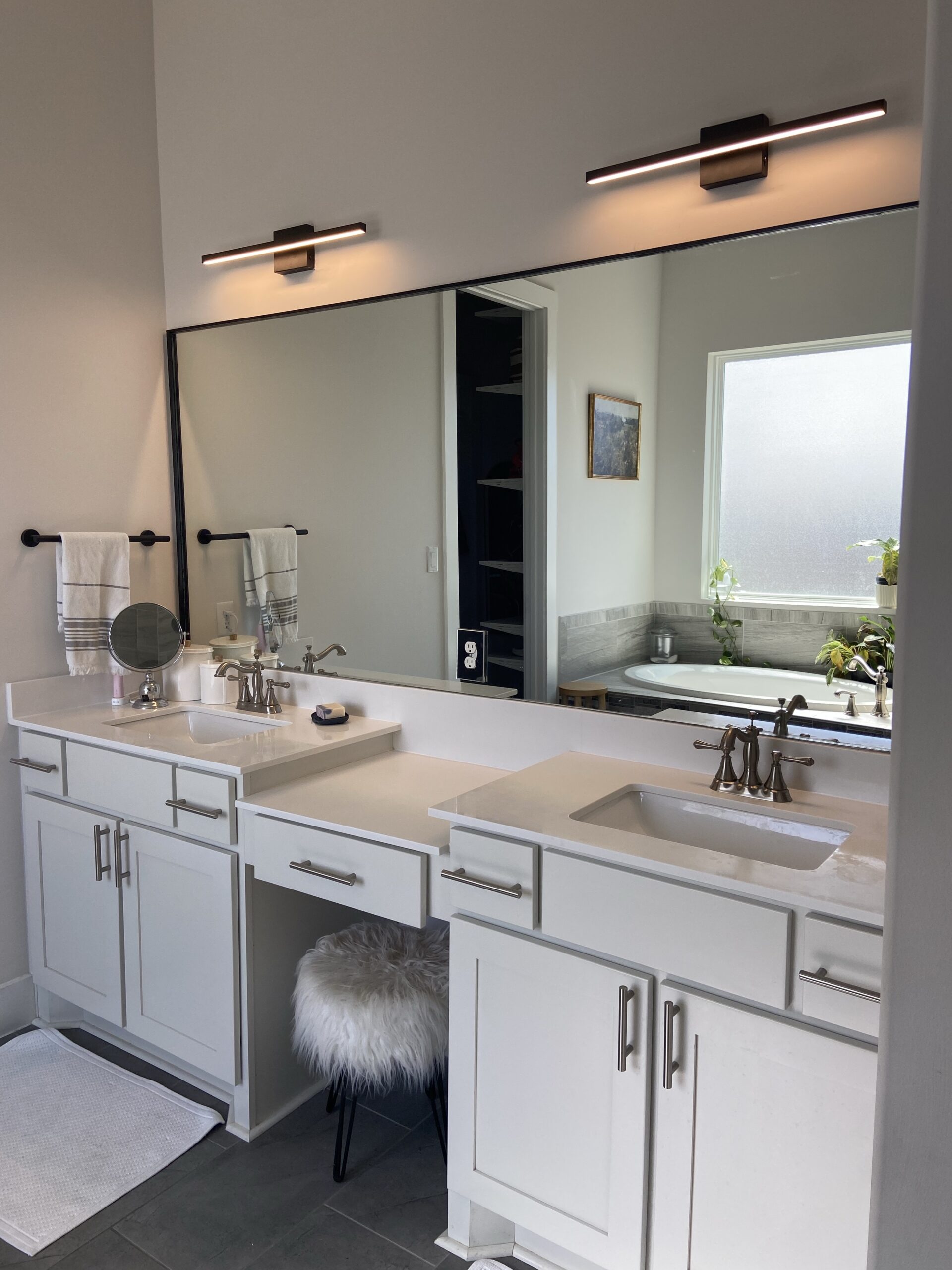With our third baby’s arrival fast approaching, I have been working hard to complete house projects! Recently, I finished the baby’s room by creating a Board and Batten Bedroom Accent Wall. Now that the baby’s room is complete I can move on to a long awaited project, the Office Renovation with Wallpaper!

The Office Before
Before starting this project, I realized the office had become a catch all junk room. I wanted to make the office space more visually appealing as well as a more usable space for our families needs.

The office furniture was a variety of free or cheap items we had collected over the years all packed into one space. It had always been my intention to redesign the office at some point to make it a more cohesive space.
During the height of Corona, we invested in a Peloton. While I love using the Peloton on a daily basis, I don’t love looking at it while its not in use. This workout bike eyesore needed to be addressed during the office renovation!
Getting Started on the Wallpapered Office Renovation
The first thing I did was get rid of all of the furniture in the existing office. Next, I went through all of my craft supplies and materials and got rid of items I no longer needed.
After the purge, I focused on creating an accent wall. The office has a double door entry and is right off of our front entrance space. I wanted the entry wall in the office to be the focal point of the space.
I decided to add a board and batten wall with peel and stick wallpaper. Wall paper adds a nice texture and pop of color to any space. Peel and Stick wallpaper is something I have tackled before in my Pantry Renovation and Reorganization on a Budget , so I felt comfortable working with it.
The hardest part about wall paper is picking out a pattern that works for your space! Target offers a wide variety of peel and stick wallpaper options. I purchased 2 rolls of NuWallpaper Cayman Peel & Stick Wallpaper Gray.

Next, I ordered all of the mdf primed boards I needed to create a 3/4 board and batten wall, similar to the wall I installed in the nursery. For a guide to building the board and batten wall follow the guide in my Board and Batten Bedroom Accent Wall Blog Post.

Creating the Wall Papered Board and Batten Wall
The first thing I did was install the wood for the board and batten wall with the exception of the top edger. I left the top edger off until the wallpaper was installed to maintain clean wallpaper edges. Next, I painted the board and batten wall. Since I wanted to keep the office bright, I went with a white paint I had from a previous project.
After the paint was dry, I hung the peel and stick wallpaper. The most important part of hanging wallpaper is making sure you have enough to match up the pattern and to make it look seamless. Hanging wall paper takes patience and practice but the best thing about peel and stick wallpaper is you can pull it off and manipulate it if there are air bubbles or it isn’t lining up correctly.

To begin hanging the wallpaper, I started on the left side of the wall and worked my way to the right. Make sure to leave overhang to the top and bottom of the wallpaper. Having more wallpaper is better than having less! You don’t want to run into a situation were you are too short and have to recut the wallpaper section. Using a box cutter, cut the excess wallpaper off to maintain clean edges.

I continued the wallpaper all the way to the right edge of the wall.

Once the wallpaper was installed, I added the top ledge to the board and batten wall. The top ledge was a design choice I added to allow me to place plants and decor on it.
Finishing Touches
To create a desk large enough for the space, I purchased three white file cabinets from Home Depot. For the desk top, I purchased a wood butcher block counter top from Home Depot and placed it on top of the evenly spaced out file cabinets.
For desk chairs, I used the same faux leather chairs I have in my dining room. Using my dining room chairs in the office allows me to store the excess dining chairs for holidays while maintaining a cohesive look.

To create the light fixture, I found a basket I loved at Home Goods and transformed it into a basket light. For a step by step guide to creating a basket light, check out my DIY Basket Lights on a Budget blog post.

In order to hide the Peloton, I purchased a screen from Amazon. When we use the Peloton, we simply move the screen to the side and when we are finished, we put it back.

I created a small seating area with chairs I had in my bedroom. The chairs needed to be moved for the baby’s bassinet, so this was the perfect spot for them!

For all of the accent pictures and decor, I took things I already had around the house as well as purchased items from my favorite store Goodwill!
I could not be any happier with the way this room turned out. It went from a catch all room to a fully functioning office/work out space!










